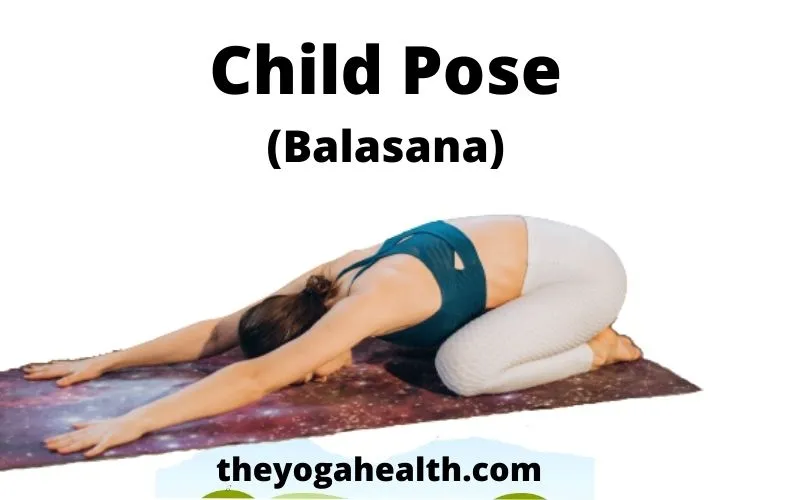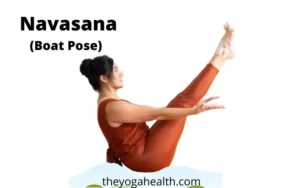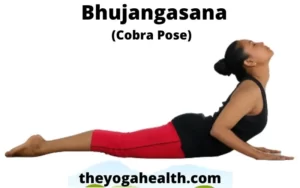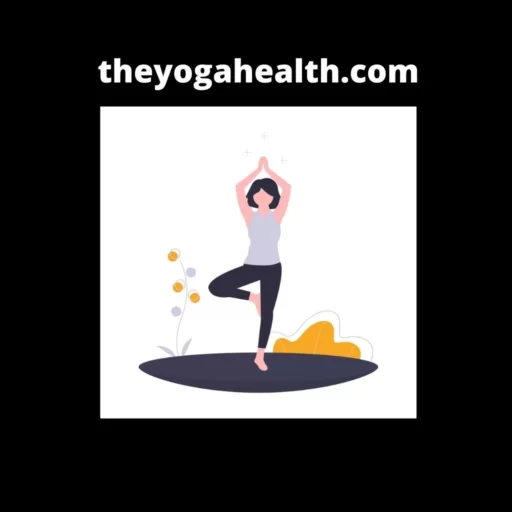The Child Pose in Yoga or Balasana is very easy to do relaxation Pose. Balasana consists of two words ‘Bala’ and ‘Asana’. In the Sanskrit language ‘Bala’, means ‘Child’ and ‘Asana’ means the ‘pose’ or ‘posture’.
The Child Pose or the Balasana is also known as the original pose because the child in the womb remains in this pose throughout his growth in the womb.
This pose is usually practiced after the end of the yoga session after intense yoga practice to regain the breath and the movement of the body. This asana relaxes the body and the breath, which helps in bringing peace to the breath-body connection.
Table of Contents
Child Pose In Yoga (Balasana)
Those who regularly practice a variety of yoga poses would notice that some yoga poses are more difficult to perform than others. Some yoga poses would stretch and pull various body organs, creating difficulty with the breathing pattern. This Pose helps in relaxing the body muscles and breathing sequence.
In this Pose, the spine remains relaxed in the forward bend position, and the abdomen and chest remain stretched on the floor, which helps to focus on the breathing.
Child pose is also the base pose for various ‘child pose variations’ which can be included in the flow yoga sequences. This is the beginners pose, it prepares the body for more advanced yoga poses.
Sanskrit Name For Child’s Pose In Yoga
In the Sanskrit language, the ancient language of India, this pose is known as “Balasna.” Let’s explore the benefits and importance of this calming posture.
“Balasana” is derived from two Sanskrit words, “Bala” means “Child,” and “asana” means “pose” or “posture.” This name ‘Balasana’ suggests the likeness of the posture of a child resting peacefully.
This pose has several benefits for both body and mind, it provide time of relaxation after or during a vigorous yoga session. This pose can also be modified to suit needs of different people, like one can place folded blanket or a cushion under his knees for extra comfort. Pregnant women can modified this pose by widening their knees slightly to accommodate their abdomen.
Balasana is a simple and powerful relaxation pose with a beautiful Sanskrit name that represents peacefulness of a child.
Basic details:
| Sanskrit Name | Balasana |
| English Name | Child Pose |
| Difficulty Level | Beginner |
| Position | Lying face down |
| Type | Forward bend |
Child Pose Yoga works on following muscles:
Lower back
- Hips
- Knees
- Neck
- Feet
- Ankles
- Arms
- Shoulders
Child Pose benefits
Child’s Pose, a fundamental yoga pose, offers numerous benefits for both the body and mind. Let’s delve into the various advantages of practicing this soothing posture.
1. It calms the mind and restores energy:
When you do the Child’s Pose, you create a safe space for your body to relax.By folding forward and resting your forehead on the ground, you encourage a sense of peacefulness.
This position calms the mind and reduces stress and anxiety. The gentle compression of the abdomen relaxes the nervous system, promoting tranquility.
2. turns your focus inward:
In our modern life we are often attracted by external things. Child pose is such an exercise which gives you chance to move away from external world and look inside your inner self.
As you move into the pose you attention shifts from the outer world to the sensations and emotions within. This inward focus is very important powerful way to gain clarity of thoughts and feelings.
3. enhances lung expansion and breathing:
During Child Pose when you breathe deeply and you expand your chest fully, it increases your lung capacity.
This improved breathing ensures a good supply of oxygen throughout your body, it takes nourishment into each and every cell of your body. As result, you feel less stress and increased energy, which positively impact your daily life.
4. gently stretches hips, thighs, and ankles:
In the Child Pose position, your knees are apart and buttocks rest on your heels, it offers a gentle stretch to your muscles of hips, thighs and ankles.
This stretching of muscles is particularly beneficial for those individuals who have sedentary lifestyles. The regular practice of Child’s Pose increases the flexibility and motion in the body joints.
5. Relieves menstrual cramp pain:
For many women, menstrual cramps can be debilitating and disrupt daily activities. Child’s Pose is a wonderful restorative posture that can bring relief during these uncomfortable times.
By opening up the pelvic area and relaxing the abdominal muscles, this pose can help alleviate pain and discomfort associated with menstruation.
6. Reduces migraines and improves blood circulation:
The deep breathing in Child’s Pose improves blood circulation that can contribute to reduction in the frequency of migraines. When blood flow is proper, it helps to release tension and obstruction in the blood vessels.
Improper blood flow in the body otherwise is a big migraine factor. By regular practice of this pose, you may find some relief from the headaches that hamper your daily life.
7. eases shoulder and neck tension:
In our modern lifestyle, many of us spend long hours hunched over computers and phones, leading to tension and discomfort in the shoulders and neck. Child’s Pose offers a gentle stretch to these areas, promoting relaxation and releasing built-up tension.
As you sink into the pose and let go of any residual tightness, you may experience a sense of relief and lightness in your upper body.
8. aids sleep, anxiety, and insomnia:
For those who struggle with sleep disturbances, anxiety, or insomnia, practicing Child’s Pose regularly can be immensely beneficial. As this pose induces a state of calmness and relaxation, it prepares the body and mind for better sleep.
The inward focus and deep breathing during Child’s Pose can also help reduce anxiety levels, promoting a sense of peace and well-being.
How to do Child Pose (Balasana)
- Sit in Vajrasana on the floor, where your knees are bend and your buttocks rest on the heels.
- Now raise your buttocks a little from the heels and widen your feet to place your buttocks on the floor.
- Breathe out and raise your arms over your head pointing straight upwards.
- Now bring your chest forward, stretch your upper body and bring down your upper body over your thighs.
- As your upper body goes down on the floor, place your forehead on the floor and extend out your arms fully in front of you.
- Your palms should be facing the floor and stretched in front of you. Feel your weight on your hands, now feel the weight of your shoulder spreading towards your shoulder blades.
- Now relax your whole body taking 5-6 breaths, feel the relaxing of your spine, lower back, and thighs.
- Now breathe in and come back by raising your upper body and straightening your spine.
Repeat this asana a few times till your whole body feels relaxed and you regain your breathing.
Contraindications
- Pregnant women should avoid this asana.
- If you have under gone any recent stomach surgery then you should avoid this asana for at least 6 months after the surgery.
- Persons with any Knee injury should avoid this asana.
- Avoid this asana if there is any spinal injury like cases of serious Spondylitis.
- Persons with loose bowels should also avoid Child Pose.
modifications
- Laying your arms by the sides of your thighs
- Using blocks or bolster for your forehead
- Using blocks or bolster for supporting your chest and face
- For better breathing turning your face sideways
- Arms on the back, fingers of both hands intertwined
Conclusion for Child Pose In Yoga:
Child pose in yoga (Balasana) is one of the most important relaxing pose of Hatha yoga, it very gently streches various parts of the body. It is a must yoga pose for taking rest after the intense yoga session to relax your whole body.
This Pose stretches the shoulders, spine, hips, and lower back. It helps to relax the mind and nervous system and stimulates internal organs. It helps to regain the spent energy of the body and also in restoring the balance of breathing with the body.
FAQs: Child Pose In Yoga
Q1. How to do Child’s Pose
Ans: This Pose can be done by bending your knees, sitting on the floor, bending your upper body in front, extending your hands in the front of your body and touching your forehead on the floor.
The complete step by step method of doing this pose is given above.
Q2. Is Child’s Pose bad for lower back
Ans: It depends upon the condition of your lower back, in case of severe spondylitis it is advisable not to do this pose, but in mild cases of lower back pain you are likely to get releif after doing this pose under expert guidance.
Q3. Is Child’s Pose good for Sciatica
Ans: yes! this is one of the Yoga poses which is recommended for patients of Sciatica apart from other asana like Cobra Pose and Locust Pose.
It was established in many studies like a study in 2013 and in 2017 that Yoga asana are useful in improving symptoms of Sciatica.
Q4. Time duration for Child’s Pose
Ans: This Pose is basically a resting pose, you can stay in this pose anywhere between half a minute to a few minutes as per your bodily requirement.
You may also like:
Share your experience of doing this pose and let us know if you have any questions or comments regarding this Pose in the comments section below.







